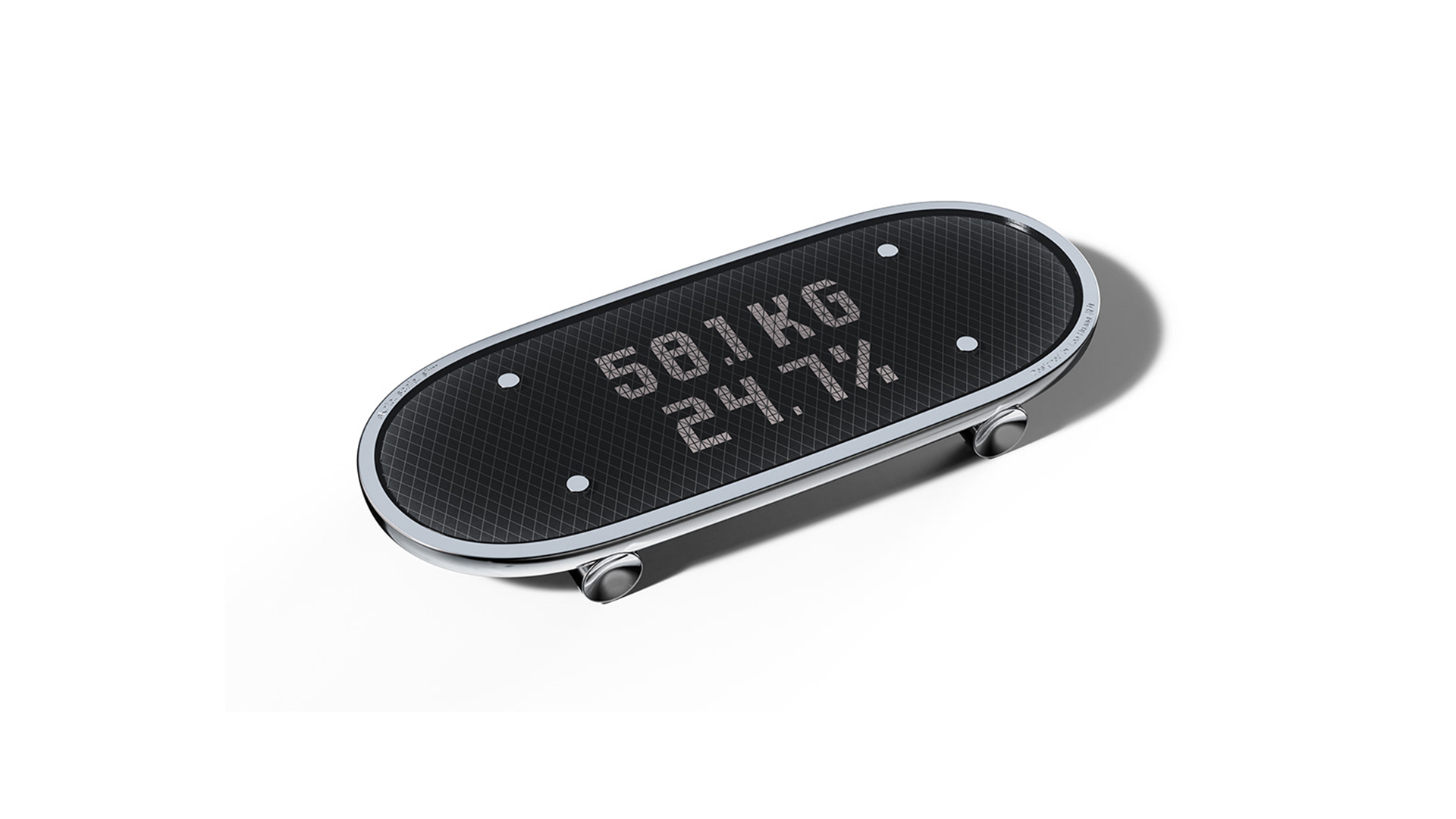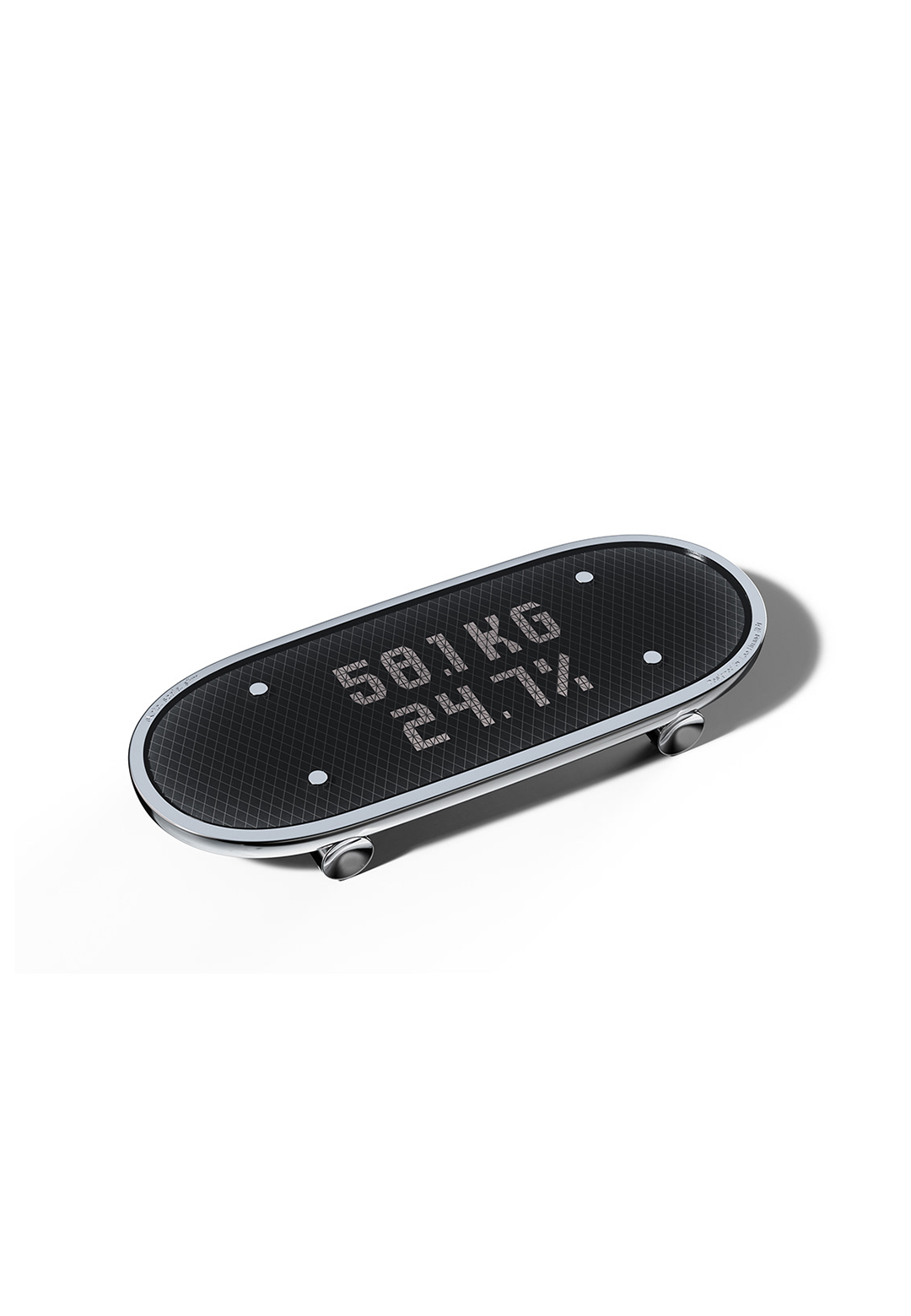At first glance, the product design by Shenzhen-based industrial designer Lee Huang can be mistaken as a skateboard belonging to the Silver Surfer (a Marvel character), used for leisure when he’s not busy searching planets for Galactus to consume. While it appears to be a skateboard, this object is far from one. The most prominent feature is something that also needs you to step on it—a weighing scale. Huang mentions how his quest for an 'aesthetically pleasing' weighing scale brought him to a realisation that most of them looked alike. Apart from a few differences in colour, shape, and material, nothing particularly stood out in the forms and design language. He explains the possible cause, “From the manufacturers' perspective, for many reasons such as the budget, the target customers may not care how this type of product looks. Those products have no chance of a better design. It could never be a hero product of any company.”
Weighing scales—a relatively blameless and basic-looking piece of equipment—has found itself being increasingly dreaded by the masses. Unrealistic beauty standards and an antagonistic portrayal of less-than-perfect weight set by media and pop culture have caused most of us to associate our self-worth with the digits visible on its tiny screens. Its concealed function to be a marker of beauty standards—defining a person’s self-worth—may also be one of the reasons the product doesn't even attempt to be aesthetically pleasing or fun-looking, given its grim symbolism.
It is limited in its structural and material design, given the necessity to withstand weight measurements and frequent usage. It hasn’t been a product that needs to look attractive. Weighing scales are often manifested as modest forms, where we are more focused (rather, concerned), about the numbers on the scale than the scale itself. The form of the product never finds an identity of its own, being an unmemorable means to an end. There is no visible scope for improvement in efficiency through design—a rectangular glass board with four metal pads that detect body-fat percentage addresses the problem perfectly well.
The China-based product designer’s choice to craft it like a skateboard makes it intuitive for users to step on it while staying delightful in its looks, as well as its ensuing interaction. Though its form causes the feet to extend out of the board’s frame, it does not interfere with its capacity to measure weight accurately. Huang does not stop there, adding another feature of significance. But, what other purpose could a product with a digital screen have?
Adding a magnet where a standard skateboard has its wheels and a gravity sensor that allows the scale to know if placed on the ground, the designer adds a clock to it. This feature allows it to become a clock while being attached to a wall. It becomes a display element while also clearing up floor space. When kept on the floor, it seamlessly transitions back into a weighing scale. It becomes a pleasing way to store the scale, rather than being slid under the furniture or taking up space inside wardrobes (as they usually do).
The industrial design is refined with a diamond grid under glass, visually similar in design to the grips found on skateboards and under shoes. The dot matrix screen camouflages against the grid, and the typography is custom designed to become a part of the design concept. Even though only K and G (to denote kilograms) were required, Lee Huang designed the entire alphabet. Apart from the screen, the rest of the weighing scale's surface is a solar panel, which removes the need for the multifunctional product to ever be plugged in. While all the features are unostentatious individually, the seamlessness with which they blend into this conceptual design makes it hard to ignore. The combination of the clock and a weighing scale makes it a daily-use product, unlike typical weighing scales.
The divergent design of the 'Skateboard Scale' makes it a statement and collectable piece, instead of just a utilitarian product. While there might not be many weighing scale enthusiasts, Huang moulds a form which invites a greater community to appreciate and use it, which would include not only collectors of fashionable and futuristic products and skateboarding enthusiasts but also those who embrace fun and brilliance in design.
Text by Akash Singh






 Sign in with email
Sign in with email










What do you think?